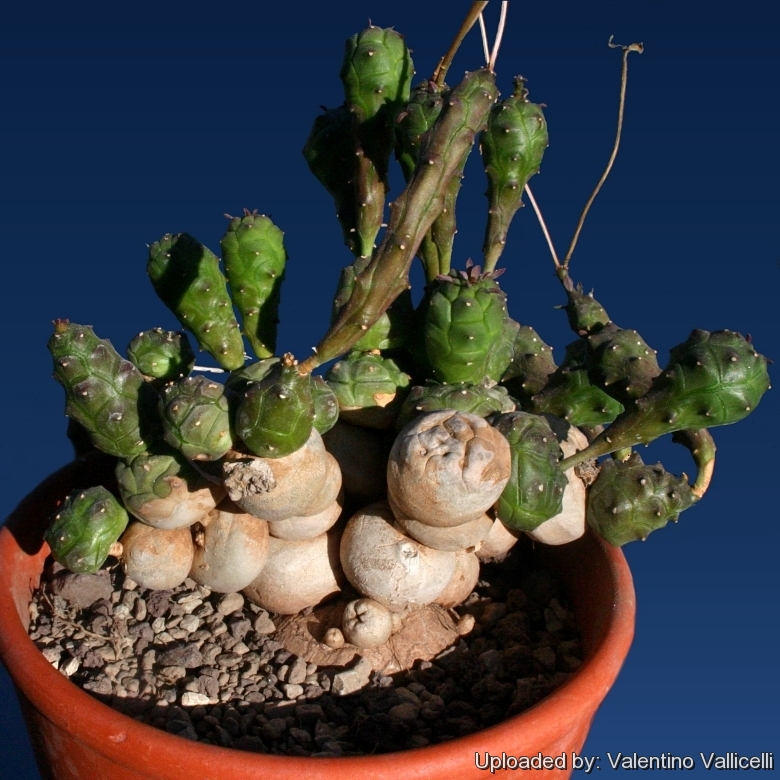
Euphorbia globosa Photo by: Valentino Vallicelli
This species is composed of odd globular, segmented fingers off a caudiciform base.
Origin and Habitat: South Africa (Eastern Cape Province, Uitenhage and Port Elisabeth area)
Synonyms:
See all synonyms of Euphorbia globosa
back
Accepted name in llifle Database:Euphorbia globosa (Haw.) SimsBot. Mag. 53: t. 2624. 1826Synonymy: 4
back
Common Names include:
ENGLISH: Globose Spurge, Globose Euphorbia, Roundish-jointed Spurge
RUSSIAN (Русский): Молочай шаровидный
Description: Euphorbia globosaSN|32917]]SN|15665]] is a dwarf spineless succulent composed of weird globular, segmented fingers off a caudiciform base, up to 8 cm tall. It forms thick mats of dwarf subshrubs up to 30 cm in diameter.
Stem: Branching from the base; branches forming a cushion, constricted into globose segments near ground; The subglobose stem segments (remembering of an Opuntia) can grow up to three centimeters in diameter, and 2.5 to 4 cm long. Flowering branches clavate to subglobose or subcylindric, to 6 cm long, 14 mm wide, deciduous, often persistent in cultivated plant.
Leaves: Leaves reduced, lanceolate, to 3 mm long, early deciduous; spines absent.
Roots: +/- Tuberous.
Flowers: Large stellate greenish yellow on long, thin stalks. : Cyathia solitary, or 2 to several in cymes, long- or short-peduncled, peduncles thread-like, to 3 mm long, or to 8 cm long; bracts 5-4; involucres to 2 cm in diameter, lobes rhombic; glands 5, divided into 3-4 linear segments, to 7 mm long, with minute, white-margined pits, the central segments often having three branches or forks.
Remarks: This species is closely allied to Euphorbia ornithopusSN|32917]]SN|32917]], but is decidedly different in its globular stem-joints, which even where they are subglobose are different in appearance, and the involucres have constantly 5 gland, whilst in Euphorbia ornithopusSN|15665]]SN|32917]] the involucres seem always to have only 3-4 glands.
Bibliography: Major references and further lectures
1) Thomas H. Everett “The New York Botanical Garden Illustrated Encyclopedia of Horticulture” Volume 4 Courier Corporation, 01 January 1981
2) Alain Campbell White, Robert Allen Dyer, Boyd L. Sloane “The Succelent Euphorbisae (southern Africa)” Abbey garden Press, 1941
3) Urs Eggli “Illustrated Handbook of Succulent Plants: Dicotyledons” Volume 2. Springer, 2002
4) Doreen Court “Succulent Flora of Southern Africa” CRC Press, 01 June 2000
5) Hermann Jacobsen “Abromeitiella to Euphorbia” Blandford Press, 1960
6) John Sims “Curtis's Botanical Magazine, Or, Flower-garden Displayed: In which the Most Ornamental Foreign Plants, Cultivated in the Open Ground, the Green-house, and the Stove, are Accurately Represented in Their Natural Colours ...”, Volume 53;Volume 1826 s.n., 1826
7) Alain Campbell White, Robert Allen Dyer, Boyd L. Sloane “The Succelent Euphorbisae (southern Africa)” Abbey garden Press, 1941
8) Gideon Smith, Neil R. Crouch “Guide to Succulents of Southern Africa” Struik Nature, 01/nov/2009
9) James Cullen, Sabina G. Knees, H. Suzanne Cubey “The European Garden Flora Flowering Plants: A Manual for the Identification of Plants Cultivated in Europe, Both Out-of-Doors and Under Glass” Cambridge University Press, 11/Aug/2011
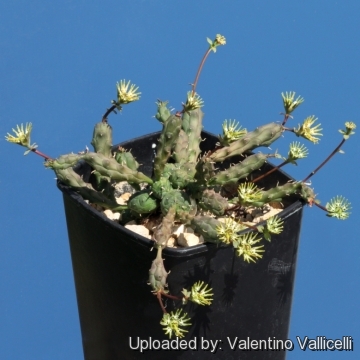 Euphorbia globosa Photo by: Valentino Vallicelli
Euphorbia globosa Photo by: Valentino Vallicelli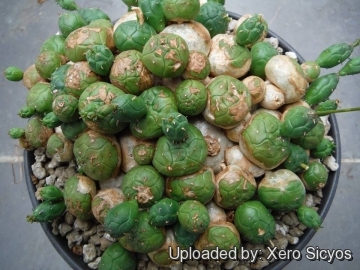 Euphorbia globosa Photo by: Xero Sicyos
Euphorbia globosa Photo by: Xero Sicyos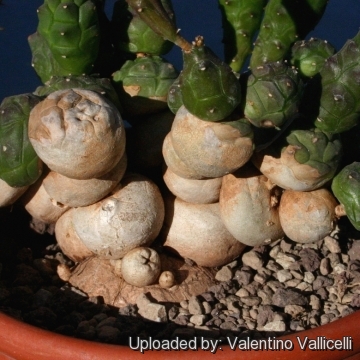 Euphorbia globosa Photo by: Valentino Vallicelli
Euphorbia globosa Photo by: Valentino Vallicelli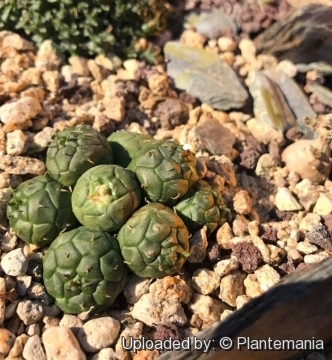 Euphorbia globosa Photo by: © Plantemania
Euphorbia globosa Photo by: © Plantemania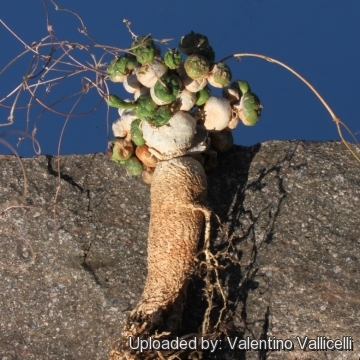 Euphorbia globosa Photo by: Valentino Vallicelli
Euphorbia globosa Photo by: Valentino Vallicelli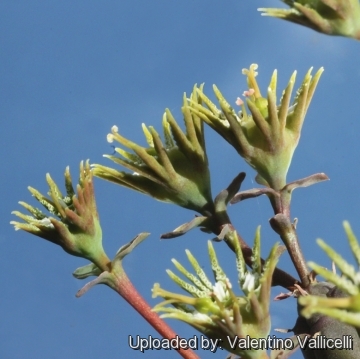 Euphorbia globosa Photo by: Valentino Vallicelli
Euphorbia globosa Photo by: Valentino Vallicelli The involucres seem always to have 5 glands, whilst in Euhorbia ornithopus there are only 3 or 4 gland. Photo by: Valentino Vallicelli
The involucres seem always to have 5 glands, whilst in Euhorbia ornithopus there are only 3 or 4 gland. Photo by: Valentino Vallicelli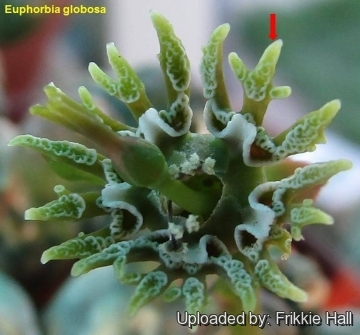 The glands are divided into 3-4 linear segments; the central segments often having three branches or forks. Photo by: Frikkie Hall
The glands are divided into 3-4 linear segments; the central segments often having three branches or forks. Photo by: Frikkie HallCultivation and Propagation: Like a sunny position. It does best in a mineral soil, good drainage is essential. Water sparingly during the summer months and keep dry in winter. It is a slow growing long lived plant and once established, it will be content in its position and with its soil for years. It can tolerate moderate shade, and a plant that has been growing in shade should be slowly hardened off before placing it in full sun as the plant will be severely scorched if moved too suddenly from shade into sun.
Remarks: Contrarily to Euphorbia symmetricaSN|15665]]SN|1968]], Euphorbia globosaSN|1968]]SN|15665]] does not always have a tap root and can be reared in a relatively shallow pot. Sometimes needs pruning not to look like a mess.
Propagation: The plant can be reproduced by seeds sown during spring or summer, cuttings and division of larger clumps.
Your Photos

by Giuseppe Distefano
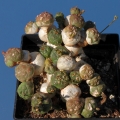
by Valentino Vallicelli
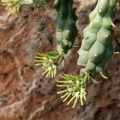
by Valentino Vallicelli

by Valentino Vallicelli
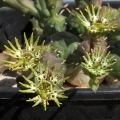
by Valentino Vallicelli























